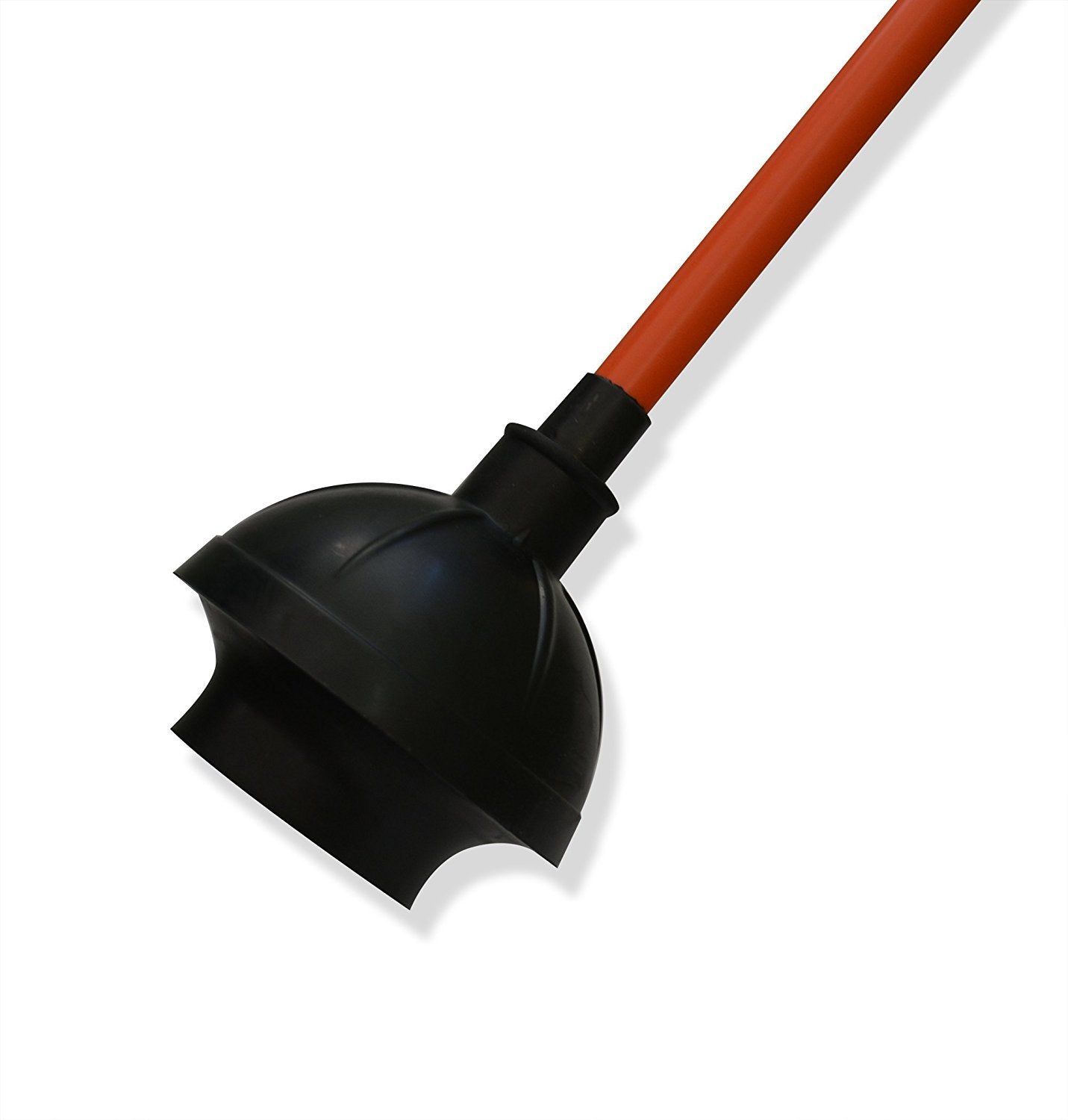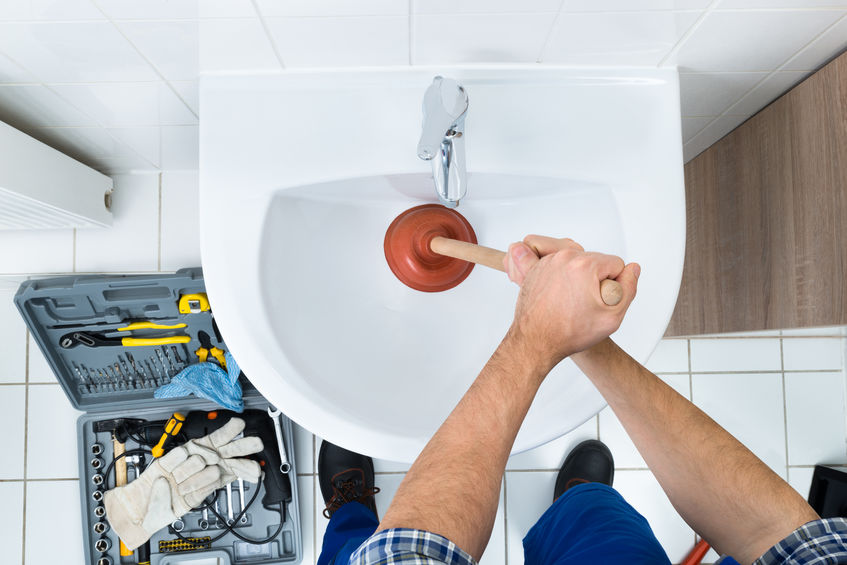Utilizing Plungers and Drain Cleaner: Pro Tips
Utilizing Plungers and Drain Cleaner: Pro Tips
Blog Article
Just how do you actually feel on the subject of How To Use Your Toilet Plunger Correctly in 5 Easy Steps?

Intro
Appropriate upkeep of home drains is vital for stopping obstructions and making certain smooth water flow. One of the key tools in every homeowner's toolkit is the bettor, together with different drainpipe cleaners made to deal with persistent obstructions efficiently. This article discovers exactly how to make use of bettors and drain cleaners effectively to keep your drains pipes streaming freely.
Section 1: Comprehending Plungers
Types of Plungers
There are several types of bettors readily available, each created for different kinds of drains pipes and blocks. One of the most common kinds include mug plungers, flange plungers, and accordion bettors.
How Plungers Work
Plungers work with the principle of producing stress and suction to dislodge clogs. When appropriately used over a drainpipe, they develop a vacuum that can pull out debris or break up obstructions.
Selecting the Right Bettor
Picking the appropriate bettor relies on the sort of drainpipe and the nature of the blockage. Cup plungers are perfect for sinks and tubs, while flange bettors are better suited for commodes as a result of their style.
Usual Errors with Bettors
Preventing these mistakes guarantees reliable plunging: improper seal around the drain, not enough force, and unclear surrounding particles.
Section 2: Making Use Of Plungers Effectively
Prep work
Before plunging, ensure the plunger covers the drain entirely and forms a limited seal. Clear any visible particles around the drain opening.
Technique
Begin with gentle diving activities to construct suction. Increase pressure gradually, utilizing a stable rhythm. Repeat as needed up until the drainpipe gets rid of.
Repairing Tips
If diving does not function, try changing the seal, applying petroleum jelly for a far better seal, or making use of a various kind of plunger.
Section 3: Understanding Drainpipe Cleaners
Types of Drainpipe Cleansers
Drain cleaners can be chemical or chemical. Chemical cleansers make use of solid chemicals to liquify clogs, while chemical cleansers use all-natural enzymes to break down raw material.
Exactly How Drain Cleaning Company Job
Chemical cleansers respond with obstructions to dissolve them, while enzymatic cleaners break down natural products like hair and grease without harming pipelines.
Safety Considerations
Constantly wear gloves and eye protection when utilizing chemical drainpipe cleaners. Make certain sufficient air flow and adhere to manufacturer directions meticulously.
Eco-Friendly Alternatives
Consider utilizing vinegar and cooking soft drink or enzyme-based cleansers for green options that are much safer for pipelines and the atmosphere.
Section 4: Utilizing Drain Cleaners Efficiently
Application Techniques
Pour chemical cleansers straight into the drain opening. Allow them to benefit the advised time before flushing with warm water. Chemical cleaners should rest overnight.
Precautions
Stay clear of mixing various kinds of cleaners, as this can generate harmful fumes. Never utilize chemical cleaners combined with a plunger, as splashing can take place.
Managing Persistent Obstructions
For persistent clogs, consider making use of a plumbing serpent or calling a specialist plumbing to stop damages to pipelines.
Verdict
To conclude, recognizing how to utilize plungers and drainpipe cleansers successfully is essential for preserving healthy plumbing systems. By picking the right devices and strategies, homeowners can tackle small obstructions and protect against significant pipes problems down the line.
How To Properly Use A Plumbing Snake To Clear Drains
When any drain clogs in our home arise, we tend to gravitate toward the plunger and little else. In cases where the plunger and its vacuum-created pressure are not able to clear clogs, many immediately move to harmful chemicals or simply call their plumber to fix the issue.
we’re happy to help with all drain cleaning needs and concerns. This includes informing you on a few other home remedies you may have at your disposal for minor to moderate clogs, one of which is the use of a plumbing snake. Many people have never used one of these before – let’s go over the steps to take when your drain clogs and you have a plumbing snake available.
Attempt Plunger Use
The first step here, as we noted above, should indeed be to grab your plunger when you notice a drain clog and attempt to resolve it this way. If you’re unsure how to use a particular type of plunger, our plumbers can answer any questions you have. If this doesn’t do the trick, however, you move on to the snake.
Locate And Prepare Snake
A plumbing snake is a metal or plastic device that’s generally about a quarter of an inch thick. It’s design with significant extensions, meant to reach down into your clogged drain and push the clog out. Snakes also contain drain augers that will latch onto and push stubborn blockages.
If your plunger doesn’t clear a clog, locate your snake and bring it to the drain in question. We also recommend keeping a bucket nearby to collect the clog once you pull it out, plus we’d advise wearing goggles and possibly protective gloves.
Feed Snake
Once you’re ready to go, feed the snake slowly down the drain, using the crank device it comes with to keep it moving until it finds the clog. Once this happens, much of the clog will be latched onto the coil so you can pull it out, while the rest will simply break up and flow downward.
Detach Debris
Remove the snake slowly from the drain, and once you’ve done so, pick off any debris that’s stuck to the coil. This is another area where wearing gloves is a must.
Flush Drain
Finally, take a few minutes to ensure the snake has done its job correctly. If you’ve been using it on a toilet, flush the toilet a couple times and make sure everything flows well. If you’ve used it on a different drain, flush it with some room temperature water.
https://www.mybuddytheplumber.com/blog/how-to-properly-use-a-plumbing-snake-to-clear-drains/

Application Techniques
Pour chemical cleansers straight into the drain opening. Allow them to benefit the advised time before flushing with warm water. Chemical cleaners should rest overnight.
Precautions
Stay clear of mixing various kinds of cleaners, as this can generate harmful fumes. Never utilize chemical cleaners combined with a plunger, as splashing can take place.
Managing Persistent Obstructions
For persistent clogs, consider making use of a plumbing serpent or calling a specialist plumbing to stop damages to pipelines.
Verdict
To conclude, recognizing how to utilize plungers and drainpipe cleansers successfully is essential for preserving healthy plumbing systems. By picking the right devices and strategies, homeowners can tackle small obstructions and protect against significant pipes problems down the line.
How To Properly Use A Plumbing Snake To Clear Drains
When any drain clogs in our home arise, we tend to gravitate toward the plunger and little else. In cases where the plunger and its vacuum-created pressure are not able to clear clogs, many immediately move to harmful chemicals or simply call their plumber to fix the issue.
we’re happy to help with all drain cleaning needs and concerns. This includes informing you on a few other home remedies you may have at your disposal for minor to moderate clogs, one of which is the use of a plumbing snake. Many people have never used one of these before – let’s go over the steps to take when your drain clogs and you have a plumbing snake available.
Attempt Plunger Use
The first step here, as we noted above, should indeed be to grab your plunger when you notice a drain clog and attempt to resolve it this way. If you’re unsure how to use a particular type of plunger, our plumbers can answer any questions you have. If this doesn’t do the trick, however, you move on to the snake.
Locate And Prepare Snake
A plumbing snake is a metal or plastic device that’s generally about a quarter of an inch thick. It’s design with significant extensions, meant to reach down into your clogged drain and push the clog out. Snakes also contain drain augers that will latch onto and push stubborn blockages.
If your plunger doesn’t clear a clog, locate your snake and bring it to the drain in question. We also recommend keeping a bucket nearby to collect the clog once you pull it out, plus we’d advise wearing goggles and possibly protective gloves.
Feed Snake
Once you’re ready to go, feed the snake slowly down the drain, using the crank device it comes with to keep it moving until it finds the clog. Once this happens, much of the clog will be latched onto the coil so you can pull it out, while the rest will simply break up and flow downward.
Detach Debris
Remove the snake slowly from the drain, and once you’ve done so, pick off any debris that’s stuck to the coil. This is another area where wearing gloves is a must.
Flush Drain
Finally, take a few minutes to ensure the snake has done its job correctly. If you’ve been using it on a toilet, flush the toilet a couple times and make sure everything flows well. If you’ve used it on a different drain, flush it with some room temperature water.
https://www.mybuddytheplumber.com/blog/how-to-properly-use-a-plumbing-snake-to-clear-drains/

Do you really like reading up on How to Use a Plunger to Unclog a Toilet or Drain? Try to leave a comment down below. We would be pleased to see your insights about this post. Hoping that you visit us again in the future. Enjoyed our blog posting? Please quickly share it. Help someone else find it. Bless you for being here. Return soon.
Click Here Report this page